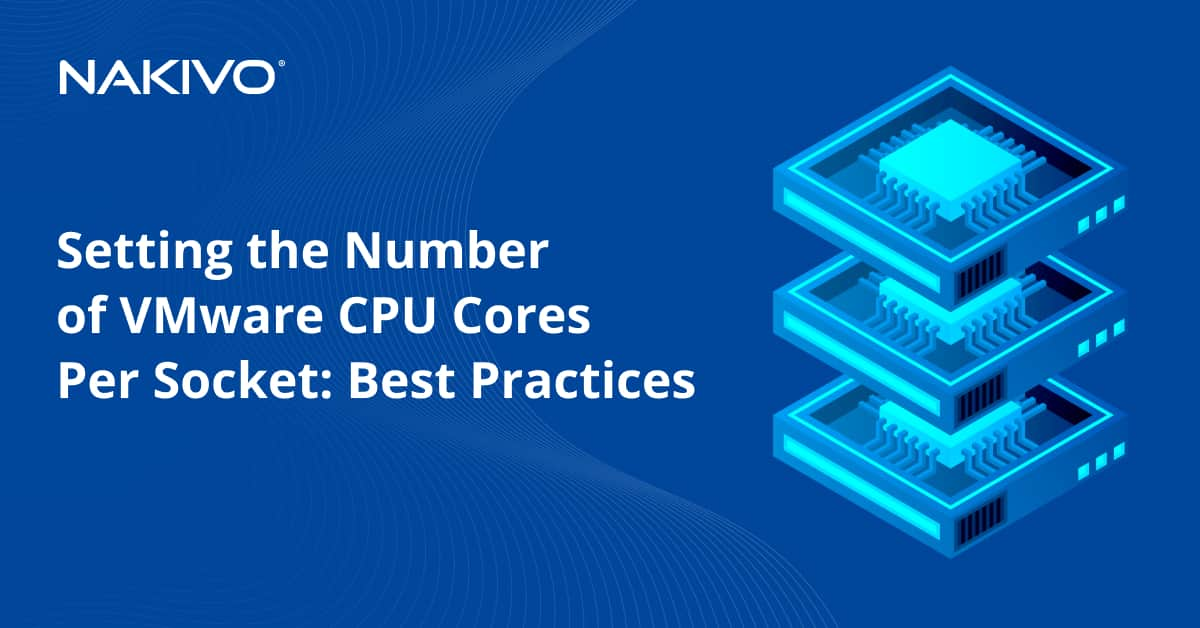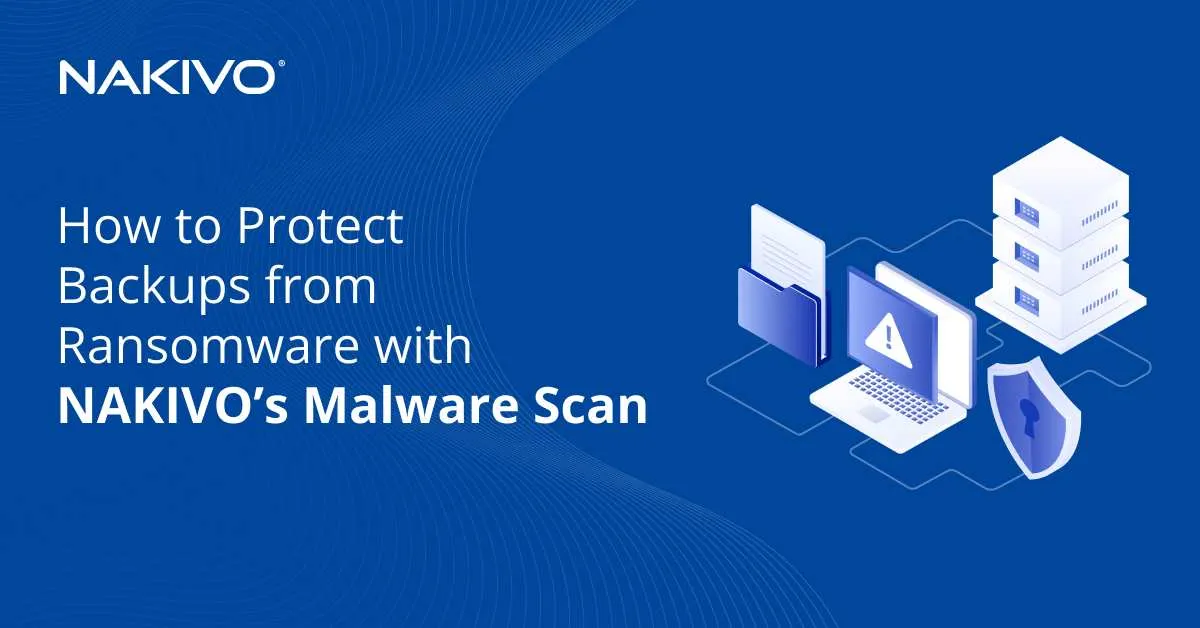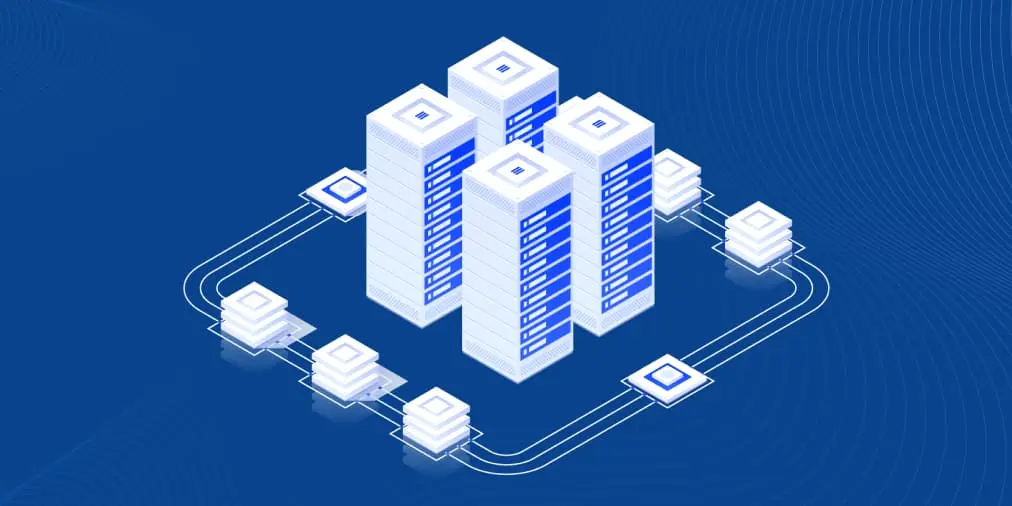What’s New in VMware vSphere 8.0?
On August 30, 2022, VMware announced a new version of VMware vSphere. The VMware vSphere 8 release date for the public has not been announced at the time of writing this post. However, based on the information already available about vSphere 8, we know that it is more optimized for private and public clouds as well as tasks related to artificial intelligence and machine learning. Let’s look at the upcoming improvements and features in VMware vSphere 8.0 in more detail.
Scalability
VMware vSphere 8.0 supports the latest Intel and AMD CPUs.
Some limits have been increased in VMware vSphere 8 compared to VMware vSphere 7 U3:
- The number of vGPU devices is increased to 8
- The number of ESXi hosts that can be managed by Lifecycle Manager is increased from 400 to 1,000
- VMs per cluster is increased from 8,000 to 10,000
- VM DirectPath I/O devices per host is increased from 8 to 32
Higher limits in vSphere 8.0 allow you to run more VMs, run more powerful VMs, and perform tasks faster.
Distributed Services Engine
VMware vSphere 8 introduces the Distributed Services Engine to work with Data Processing Units that allow you to offload a central processing unit (CPU).
A Data Processing Unit (DPU) is a new class of programmable processors built on the ARM architecture, which can be used together with CPUs and GPUs (graphics processing units) for computing operations primarily related to networking and communications.
A DPU is now incorporated into a Smart NIC controller, which is plugged into the motherboard. This new approach allows us to improve network performance in a virtual environment built on vSphere 8 and offload a CPU for performing network operations.
A Smart NIC is much more powerful than the traditional NIC (network interface controller) and is especially useful with VMware NSX. VMware says that up to 20% of CPU workloads can be freed up when using DPUs now. The higher transaction rate, lower latency, and security benefits are the advantages you get with this feature.
NSX Distributed Firewall will now use DPUs, this is optimal for east-west network traffic, which is increasingly more common in modern virtualized data centers. This approach offloads security operations from CPU to DPU.
VMware vSphere on DPUs, known as Project Monterey before the release, was implemented in collaboration with hardware vendors like Intel, AMD, NVIDIA, and OEM system partners.
Working with Devices More Effectively
Device groups is a feature that allows you to logically link multiple devices, such as GPUs, and connect these devices to a virtual machine. This feature can be useful for artificial intelligence and machine learning workloads (AI/ML workloads). Communication I/O is optimized when bundling multiple devices and exposing them to a VM. You can combine multiple network adapters or GPU devices.
Device Virtualization Extensions (DVX) are being introduced in VMware vSphere 8 to bring a new approach to how VMs use hardware. In previous VMware vSphere versions, virtual machines could use hardware only via DirectPathIO (directly). The old approach has some limitations in mobility, for example, when you need to migrate VMs with vMotion. DVX provides a new API framework that vendors can use to support virtualization features such as:
- VM suspend and resume
- VM live migration
- Disk and memory snapshots
The new approach allows you to run VMs with support of these features in HA and DRS clusters. A DVX driver must be installed on both ESXi and guest OS (inside a VM) sides.
High latency sensitivity with hyperthreading allows VM’s virtual CPUs to be scheduled on the same hyperthreaded core of a physical CPU (central processing unit). You need to set 100% memory and CPU reservation for this virtual machine to meet the low-latency requirements for the appropriate applications installed on the VM. In this case, each vCPU has exclusive access to a thread on a physical processor core.
VMware vSphere datasets are a new way to share data between VMware vSphere and a guest operating system running inside a VM. Datasets are stored with the VM and are moved together with the VM when the VM is migrated. VMware vSphere datasets are convenient for sharing data between the VMware vSphere management layer and guest OS layer inside a VM (note that VMware Tools are required).
Security
There are also a couple of new security features in VMware vSphere 8.0:
- SSH timeout. You can enable SSH access to an ESXi host for a specified period. After this period (timeout) expires, SSH access is disabled automatically. This feature helps avoid accidental SSH access, for example, when an administrator forgets to disable it after completing tasks via SSH.
- TPM Provision Policy. This feature gives you the ability to automatically replace a vTPM (Trusted Platform Module) device when cloning VMs. The aim is to improve security and avoid risks associated with TPM secrets being copied.
When configuring VM cloning, you have two options to choose from: copy or replace. Copying virtual machines with the same TPM may cause security issues because the same secret is used on multiple VMs. This new vSphere 8 feature allows you to automatically avoid this issue by choosing the replace option.
- TLS 1.2 is the minimum supported version now. You can use higher versions, but legacy TLS versions are not supported.
Lifecycle Management
Lifecycle management in VMware vSphere 8 also has new changes.
- VMware vSphere Configuration Profiles is the new alternative to VMware Host Profiles, which allows you to use the desired-state model for host configuration, attach the configuration profile to a cluster, and apply it. Now you can define the configuration for a cluster and apply this configuration to the cluster, including all child objects such as ESXi hosts, instead of attaching a profile-level configuration to each ESXi host individually.
- Staging cluster images. Stage all ESXi hosts within a cluster with one mouse click without putting them into maintenance mode. Upgrading ESXi hosts in VMware vSphere will become faster, and you can decrease the management window.
- Remediating ESXi hosts in parallel. This new concept allows you to remediate clusters faster, which is convenient when you need to upgrade a large cluster with many hosts. You can set the number of hosts to remediate (10 is the maximum). This new approach is more effective as currently you need to update one host at a time and put these hosts into maintenance mode before remediation.
- VMware vSphere Update Manager is deprecated. You will still be able to use this tool in version 8, but it will be eliminated in future vSphere versions.
vCenter Recovery
In general, when you restore vCenter from a backup, the vCenter configuration is reverted to the point in time when the backup was created. As a result, any changes made since that backup was done may be missing. Such a situation is inconvenient, especially if many changes were made in the interval since the backup, as you may need to reconfigure vCenter manually.
A simple example of this is adding an ESXi host to a vSphere cluster after creating a vCenter backup. If you restore vCenter from this backup, vCenter will not know about the added host in this case.
A new mechanism in VMware vSphere 8 allows you to recover vCenter 8 with the latest configuration in a cluster. It is possible because a distributed key-store of cluster state is used. When you restore vCenter Server from a backup, the vCenter instance will use the distributed key-value store to get the latest cluster state and configuration.
New Virtual Hardware
VMware vSphere 8.0 provides VM hardware version 20. This version of virtual hardware allows you to use the latest features of the newest vSphere version, including:
- Support of the latest guest operating systems, including Windows 11
- High latency sensitivity with hyperthreading
- Application-aware migrations
VMware Tools must be installed in a guest OS to use the new vSphere 8 features, including the features supported by VM hardware 20.
Virtual NUMA Configuration
In version 8, you can manage vNUMA configuration in the GUI of vSphere Client instead of VM advanced settings or command line interface (CLI). The visualization of vNUMA makes the configuration process more convenient. Read more about vNUMA and setting the number of cores per CPU in a VM.
DRS and vMotion
Distributed Resource Scheduler (DRS) in VMware vSphere 8.0 can better understand the memory workloads of VMs (using persistent memory) to make migration decisions. As a result, VM placement and migration don’t affect performance.
Green metrics are introduced for monitoring power consumption to improve energy saving. You can view graphs in the native vSphere web interface. Green metrics include:
- Power.Capacity.UsageVm
- Power.Capacity.UsageIdle
- Power.Capacity.UsageSystem
Creating migration-aware applications
In the current vSphere version, the performance of some applications can suffer during a VM migration due to latency sensitivity, for example, with VoIP (Voice over IP) phone applications. Now you will be able to write applications that are migration aware for running on virtual machines in vSphere 8. You can make applications that acknowledge that a VM migration has been initiated and that delay the VM migration with a configurable timeout but without the ability to cancel the migration. You can also allow a created application to shut down its service gracefully after being notified about a VM migration.
VMware vMotion in vSphere 8 supports the migration of VMs running on ESXi hosts that support Intel Scalable I/O Virtualization (SIOV).
VMware vSAN
VMware vSphere 8 introduces improvements to build a hyper-converged infrastructure and increases performance and efficiency. The new vSAN Express Storage Architecture improves the overall efficiency and is optimized for running on modern hardware.
- VMware vSAN 8 supports modern TLC storage devices for higher storage performance (solid state drives using triple-level cells).
- Mechanisms of data compression are improved. VMware vSAN compression removes redundant data within file blocks. First, vSAN applies deduplication, and then compression is applied when moving data from the cache to the capacity tier.
- A new storage pool concept increases availability. The vSAN 8 storage pool concept allows you to create smaller fault domains.
- Resynchronization time is faster. Resync is the recreation of a vSAN object and distribution of the objects across ESXi hosts that are members of a vSAN cluster.
- Native snapshots are available.
Tanzu Kubernetes
Tanzu Kubernetes Grid 2.0 with Workload Availability zones is a great vSphere 8 update for administrators and DevOps working with containers. Workload Availability Zones allow you to deploy a Kubernetes cluster across VMware vSphere clusters. Kubernetes capabilities are expanded to include multi-availability zones. This feature can improve the resilience of cloud-native applications and modern workloads. Package management and cluster lifecycle are simplified.
Operating multiple Kubernetes clusters becomes simpler. You can manage clusters from a single place. Cluster creation is also simplified due to a new Cluster API feature called ClusterClass. Open-source API alignment can be used for automation and development.
Conclusion
VMware vSphere 8 provides a set of improvements and new features that help you increase performance and simplify and speed up administration. The VMware 8 download link should be available after the release on the VMware website. Follow the official announcements and updates.
Whatever your version of VMware vSphere, it’s a best practice to create agentless, application-aware backups of your VMs based on a carefully designed retention strategy. NAKIVO delivers a backup and recovery solution designed specifically for today’s VMware environments.





